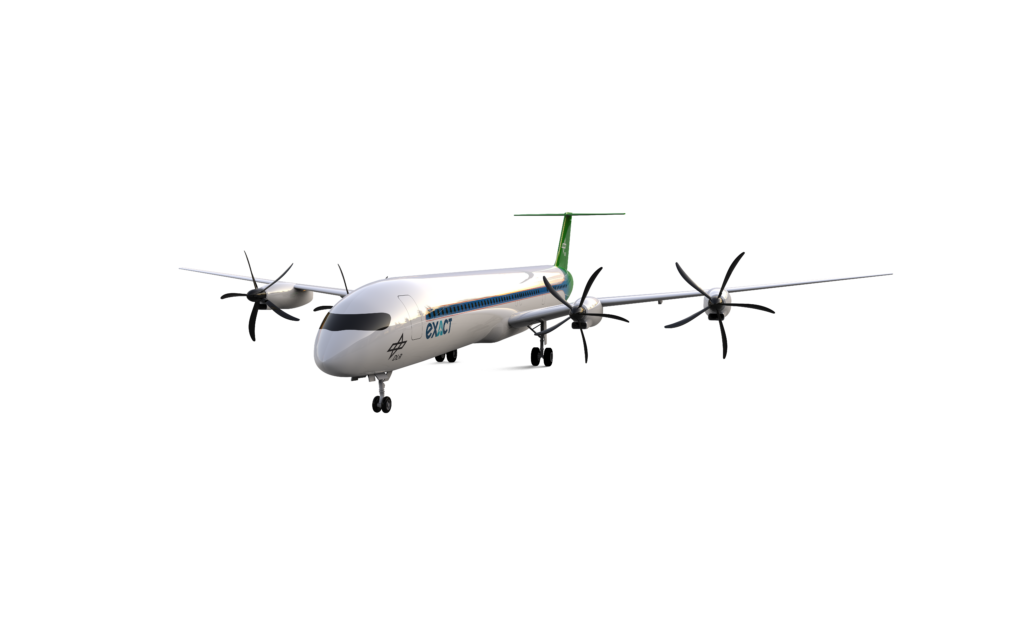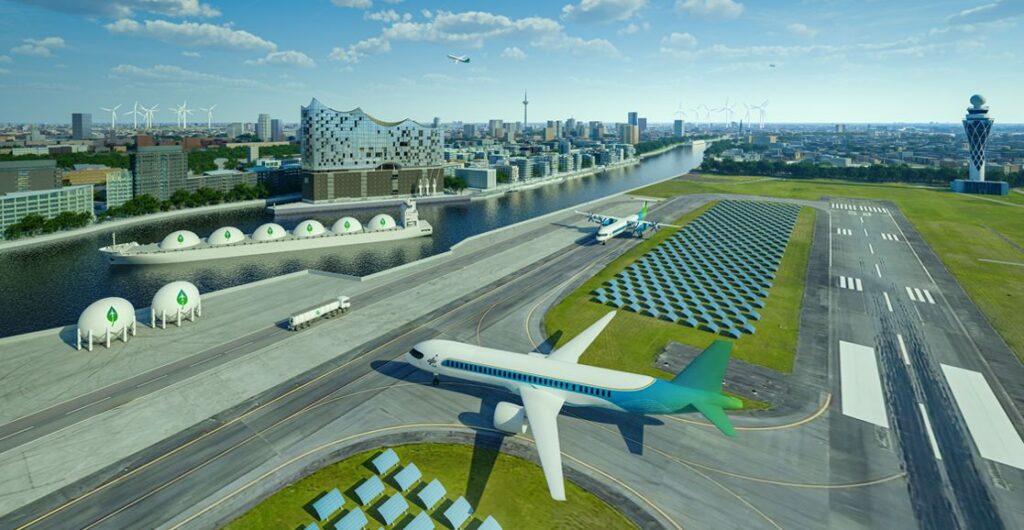Which aircraft have the greatest potential to actually and drastically reduce aviation’s climate impact, and what would they have to be like? These aircraft would not only need to have great ecological, but of course also economical potential, so that they literally pay off for both, airlines and passengers.
Within EXACT, many aircraft configurations for approximately 250 passengers and a few smaller ones (regional class) have been pre-designed and narrowed down to a total of three aircraft, focussing the overall goal of the project:
Identifying aircraft that are economically viable and have a significantly reduced climate impact, so the EU’s climate targets can be met.
The comprehensive analysis and impact assessment of the aircraft configurations cover the entire lifecycle of the aircraft and the chain of production and use of energy carriers. The complexity of this research task is reflected in the involvement of 20 disciplines coordinated by the DLR Institute of System Architectures in Aeronautics. Not surprisingly, this is the largest aviation project of the German Aerospace Center (DLR) and one of the largest sustainable aviation studies in general.
The good news: the findings could spark some optimism among the more pessimistic. Why? Because at least 80% of aviation’s climate impact can be avoided with the three most promising concepts.
This is a great result from a very comprehensive study, but our research doesn’t stop there. Instead, we are now working to minimise the number of assumptions that have had to be made so far.
We will focus on more detailed design of the most promising aircraft concepts, both internally and in collaboration with the wider community (organisations from industry research).
The configurations we are talking about are the following:
-
- Plug-in-Hybrid: This type of aircraft could travel 500 kilometres fully battery-electric and even up to 2,800 kilometres hybrid-electrical with sustainable fuels.
- Hydrogen Mild Hybrid: The climate impact of an aircraft can be reduced by at least 80 percent if powered with hydrogen. Fuel cells to support ground operations, during descent or in the on-board systems would result in a significant reduction in emissions.
- Turboprop: When powered with fossil fuels, the climate impact of a turboprop aircraft is already reduced by 40 percent compared to a turbofan aircraft of the same passenger class; the use of sustainable fuels would reduce the impact on the climate even further.
Want to get a first glimpse of the configurations we will be looking at?


